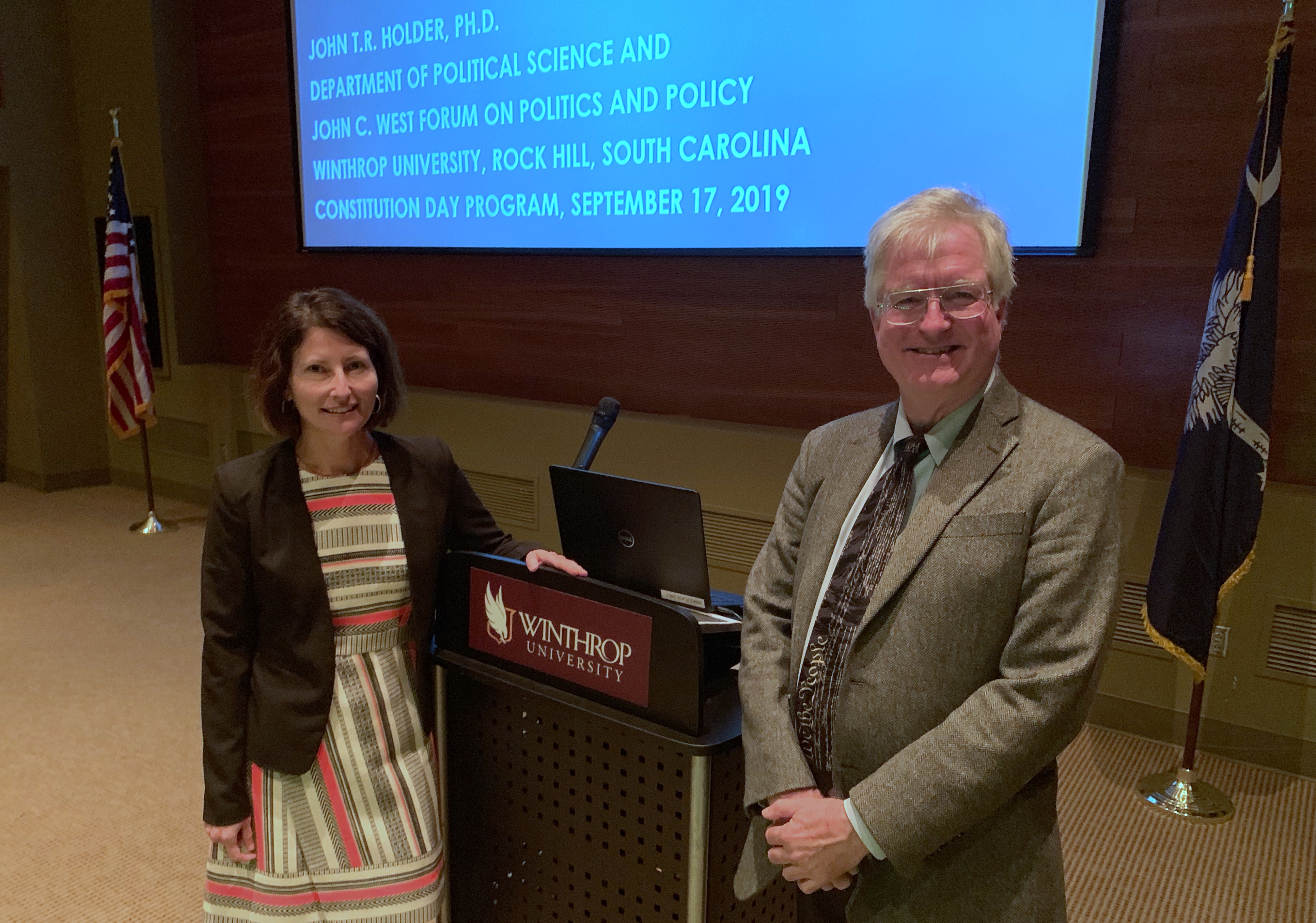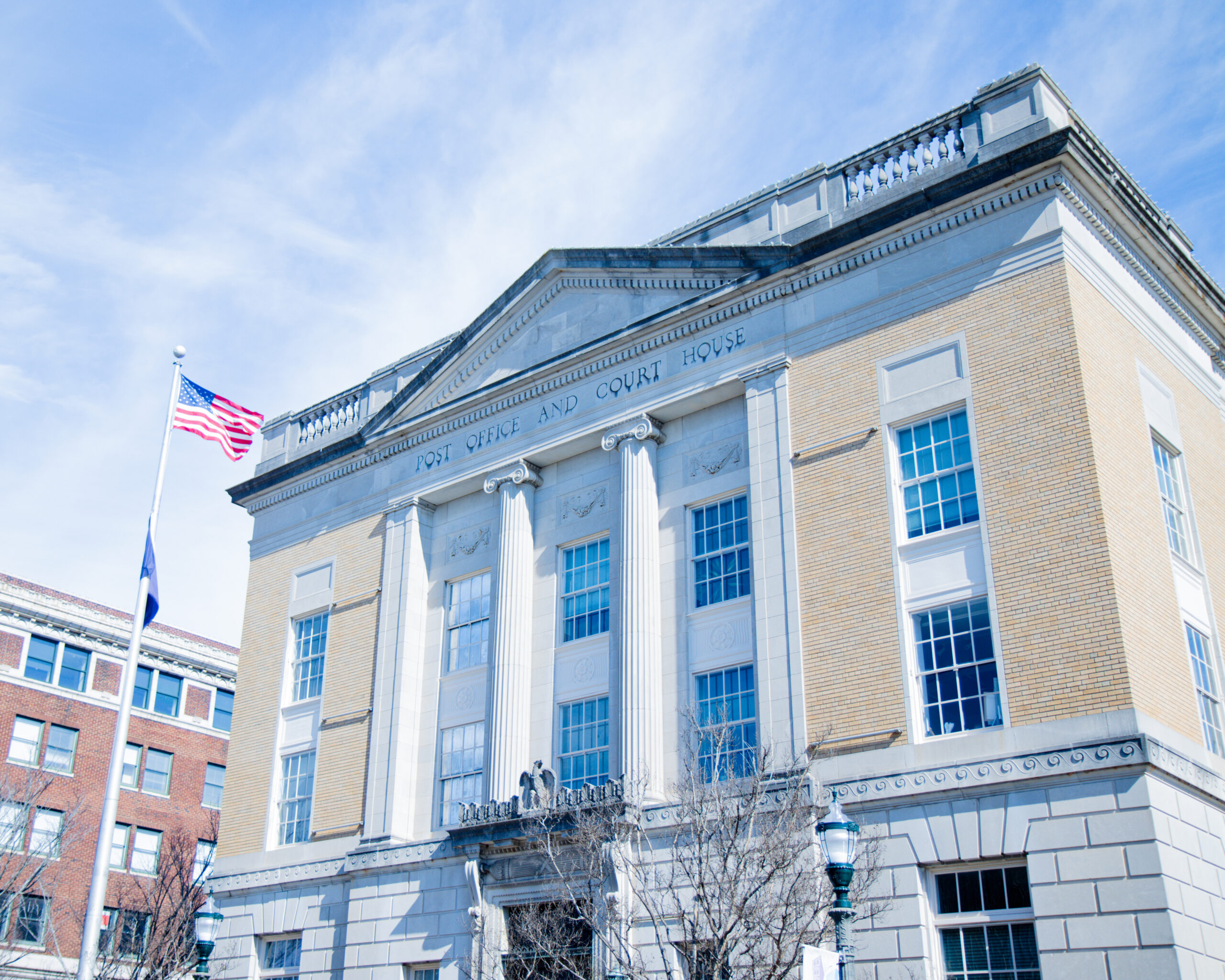In the years since the United States Constitution was signed by the Constitutional Convention in 1787, a great deal has changed. However, sometimes the more things change, the more they stay the same.
Gerrymandering, or the redrawing of voting districts to give one political party a leg up over the other, has remained a hot-button issue for a number of years. Winthrop University adjunct faculty member John T.R. Holder addressed this in a lecture he gave in Dina’s Place.
Holder, who teaches in Winthrop’s political science department, began his talk by explaining that Winthrop holding a Constitution Day event is a federal requirement.
“In 2004, Senator Robert Byrd of West Virginia sponsored a federal law that requires all schools receiving federal funding, which is every public school K-12, college, university, in the United States to do a commemoration of the Constitution on or about Sept. 17 of every year,” Holder said. “So this is how Winthrop is fulfilling a legal requirement that makes it possible for you to get your Pell Grants and faculty to get research grants and so forth.”
Holder said that after being asked to make a presentation for Constitution Day event, which was sponsored by the West Forum, he decided to tackle the issue of gerrymandering, adding that “the Constitution doesn’t actually tell states how to draw their district lines.”
Holder went on to address the origins of the term ‘gerrymandering,’ which is a portmanteau of ‘salamander’ and the last name of Elbridge Gerry, former governor of Massachusetts in the early 1800s. The first use of the term dates back to 1812 and appeared in a political cartoon in an issue of the Boston Gazette.
“[Gerry] pronounced his name Gerry with a hard ‘G’ but for reasons unclear, the political practice named for him has come to be called ‘gerrymandering’ pronounced with a soft ‘G,’” Holder said. “So, when Gerry was governor, the Massachusetts legislature drew a districting plan that heavily benefitted his party, and one of the districts that a newspaper cartoonist looked at the map and decided that one of the districts looked like a salamander. So, he drew a political cartoon in the paper, called it a ‘Gerrymander,’ and the name stuck.”
Congressional districts are supposed to be made up of equal population, however that has not always been the case. Holder showed the maps of South Carolina’s congressional districts since the 1970s and explained how they have shifted over time.
“Nice, regular lines, you can look at the map and figure out which district you’re in,” Holder said of the 1970s district. According to Holder, the districts were not equal in terms of population. By the time the 1980s rolled around, the courts had begun “enforcing the equal population requirements.”
Holder said that in the 1990s, district lines got “really interesting looking.” He said that South Carolina was legally required to “maximize the opportunity for the election of people from groups that had traditionally been disenfranchised.”
“[South Carolina] was required to draw a district that would facilitate the election of an African American member of congress. So what happened is they drew together the African American areas of Charleston, the African American areas of Columbia, Sumter and so forth,” Holder said.
Holder said that states “can’t district on the basis of race, but you can district on the basis of party.” States have gotten creative with drawing district lines to the point that Holder recounted a commentator describing a congressional district map appearing as “Goofy kicking Donald Duck.”
After detailing how North Carolina has drawn districts in such a way that the majority of the representatives from the state are Republican, Holder emphasized that gerrymandering is not limited to just the GOP.
“The Democrats do it too,” Holder said. “The Democrats did it in California, the Democrats did it in Illinois, the Democrats did it in Maryland and really in Massachusetts and they did it in New York. Both sides do it.”
This creative gerrymandering along the lines of political affiliation has resulted in states drawing voting districts that will ensure that one party consistently beats out the other in elections. Perhaps the most extreme case of this is in Massachusetts where they district lines are drawn in such a way that every representative from the state is a Democrat.
While gerrymandering may appear as something that should be illegal, Holder said that “the federal courts have traditionally not dealt with what they call ‘political questions.’”
“The Constitution gives Congress jurisdiction over federal elections — that is, the U.S. House, the U.S. Senate. Congress and the states share responsibility for presidential elections. State legislatures have jurisdiction over state and local elections. So, the federal court ordinarily is not going to have jurisdiction to tell North Carolina how to draw its state legislative boundaries or its congressional districts,” Holder said.
Holder said that the federal courts will get involved only if “somebody’s right under the U.S. Constitution are being violated” which falls under the jurisdiction of the federal courts.
In the face of rampant partisan gerrymandering, nine states have adopted an alternative method that utilizes non-elected commissions to draw congressional districts.
“You might have a group of people chosen by the state Democratic party working with people chosen by the state Republican party and maybe some political independents, and they get together and draw a map that they all agree on and then they present it to the legislature and the legislature either approves it or says ‘we don’t like this’ but they can’t amend it. They have to take it or leave it and if they leave it, the commission comes up with another map so you get something that doesn’t favor either party,” Holder said.
Photo: Courtesy of Judy Longshaw




